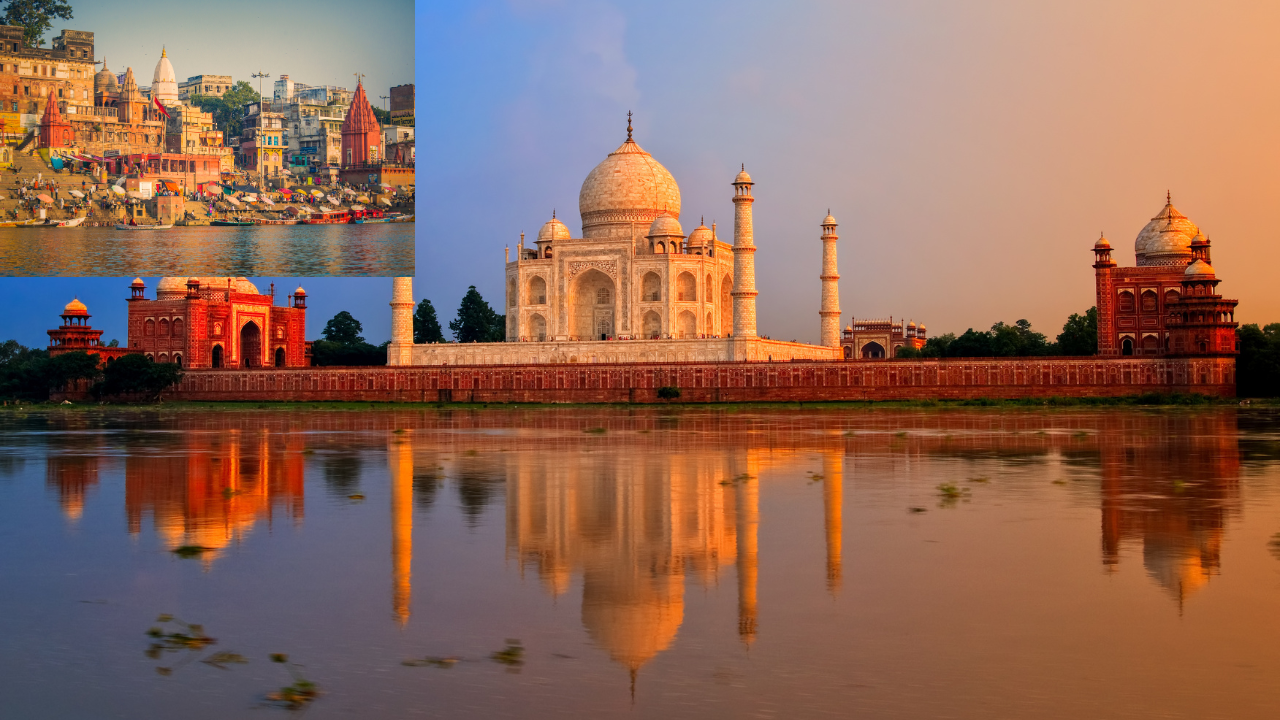How to Choose & Buy the Right Travel Backpack: The Ultimate Guide
Traveling is one of the most enriching experiences in life, but the quality of your journey often depends on the gear you bring with you. Among all travel essentials, a travel backpack is perhaps the most important. It carries your belongings, supports your mobility, and directly impacts your comfort on the road. Choosing the right one isn’t just about aesthetics—it’s about functionality, fit, durability, and practicality.
In this comprehensive guide, we’ll walk through everything you need to know about picking the perfect backpack for your adventures, from size and style to materials and features. Whether you’re planning a weekend getaway, a month-long backpacking trip, or business travel, this article will help you make an informed decision.
Why Your Travel Backpack Matters
A travel backpack is more than a bag—it’s your mobile home during trips. Unlike suitcases, which are great for structured travel, backpacks provide flexibility, comfort, and mobility. They allow you to walk long distances, navigate stairs, explore cobblestone streets, and move through airports with ease.
The right backpack will:
- Reduce back and shoulder strain
- Keep your belongings organized and secure
- Fit within airline carry-on requirements
- Withstand different weather conditions
- Adapt to multiple travel scenarios (city trips, outdoor adventures, business travel)
On the other hand, the wrong backpack can lead to back pain, broken zippers, soaked clothes, or even restricted movement. That’s why investing time and money into the right choice is crucial.
Step 1: Determine Your Travel Style
Before shopping, ask yourself: How do I usually travel? Your travel style directly influences the type of backpack you need.
1. The Weekend Traveler
If you usually go on short city breaks, a 30L to 40L backpack is enough. Look for one that fits in an overhead bin as carry-on luggage.
2. The Long-Term Backpacker
For extended trips (1+ months), you’ll need a 50L to 70L backpack. These offer enough space for clothing, shoes, and gear but should still be lightweight.
3. The Business Traveler
If you travel for work, look for a sleek, laptop-friendly backpack with compartments for documents, chargers, and clothes. A 35L to 45L backpack with an anti-theft design works best.
4. The Outdoor Adventurer
For hiking or trekking, choose a specialized trekking backpack (50L+) with strong suspension, water-resistant materials, and external gear loops.
Step 2: Backpack Size & Capacity
One of the most confusing aspects of choosing a travel backpack is size. Backpacks are measured in liters (L), which indicates how much space they offer.
Common Sizes:
- 20L – 30L: Best for day trips, commuting, or minimalist travel
- 30L – 40L: Great for weekend trips or strict carry-on travel
- 40L – 50L: Ideal for one-week trips
- 50L – 70L: Best for long-term travel or backpacking
- 70L+: Suitable for camping, hiking, or gear-heavy adventures
Pro Tip: Always test how the backpack feels when fully packed. A 50L bag may look manageable but can become too heavy when loaded.
Step 3: Fit & Comfort
Comfort is non-negotiable. A good backpack should feel like an extension of your body.
Features to Look For:
- Adjustable Shoulder Straps – Distribute weight evenly.
- Padded Hip Belt – Transfers 60–80% of the weight to your hips instead of your shoulders.
- Chest Strap (Sternum Strap) – Keeps the pack stable while walking.
- Ventilated Back Panel – Allows airflow to reduce sweating.
- Adjustable Torso Length – Important for tall or petite travelers.
When trying on a backpack:
- Load it with weight (most stores provide sandbags for testing).
- Adjust straps until the backpack feels balanced.
- The hip belt should sit on your hip bones, not above or below them.
Step 4: Materials & Durability
Your backpack will face rain, dust, airport handling, and rough terrain. Choosing the right material is key.
- Nylon (Ripstop) – Lightweight, water-resistant, durable.
- Polyester – Affordable but less durable than nylon.
- Canvas – Stylish but heavier and less water-resistant.
- Leather Accents – Durable but adds weight.
Also, check for:
- Water resistance or rain cover
- Lockable zippers (TSA-approved is a plus)
- Reinforced stitching in high-stress areas
Step 5: Organization & Compartments
A well-organized backpack saves time and frustration.
Must-Have Compartments:
- Main Compartment – Spacious enough for clothes and essentials.
- Laptop Sleeve – Padded section for electronics.
- Front Pocket – For quick-access items (passport, tickets).
- Side Pockets – For water bottles or umbrellas.
- Hidden Pocket – For valuables like cash or passports.
- Compression Straps – Keep your load tight and compact.
Some backpacks also feature detachable daypacks—perfect for sightseeing without carrying your full load.
Step 6: Weight & Portability
A heavy backpack (when empty) adds unnecessary strain. Ideally, your empty backpack should weigh under 2 kg (4.4 lbs). Lightweight models are better, but don’t sacrifice durability for weight.
Also, consider airline restrictions. Many budget airlines only allow 7–10 kg carry-on bags, so a lighter backpack gives you more room for belongings.
Step 7: Security Features
Safety is crucial, especially when traveling in busy cities.
Look for:
- Lockable zippers
- Cut-proof fabric (slash-resistant)
- Hidden pockets
- RFID blocking compartments
- Anti-theft straps for attaching to chairs or poles
Brands like Pacsafe specialize in theft-proof designs.
Step 8: Style & Aesthetics
While functionality comes first, style matters too. You’ll be carrying your backpack everywhere, so choose one that suits your personality.
Options include:
- Minimalist & sleek (good for business travel)
- Sporty & rugged (great for adventure trips)
- Trendy & colorful (ideal for casual travel)
Step 9: Budget & Value
Backpacks range from $50 budget models to $300 premium brands. Consider your needs:
- Budget travelers: Brands like Osprey Daylite or Decathlon offer great value.
- Mid-range: North Face, Deuter, Gregory—durable with excellent features.
- Premium: Nomatic, Peak Design, or Osprey Farpoint series—built for long-term use.
Pro Tip: Always treat your backpack as an investment. Spending a bit more can save you from replacing it every year.
Step 10: Test Before Buying
Whenever possible, go to a store and:
- Load the backpack with weight.
- Walk around for 10–15 minutes.
- Check for pressure points.
- Adjust straps to see if it fits your body well.
If buying online, read reviews carefully and check return policies.
Best Travel Backpack Recommendations (2025)
Here are some of the top-rated travel backpacks you can consider:
- Osprey Farpoint 40/55 – Best overall travel backpack (lightweight, durable, carry-on friendly).
- Nomatic Navigator 32L – Best for business travelers (sleek, tech-focused).
- Deuter Aircontact Lite 50+10 – Best for long-term backpackers (comfortable suspension).
- Pacsafe Venturesafe EXP45 – Best anti-theft travel backpack.
- Peak Design Travel Backpack 45L – Best stylish & versatile option.
- Tortuga Outbreaker 45L – Best for digital nomads (organization & laptop protection).
Care & Maintenance Tips
A backpack can last years with proper care:
- Clean after every trip (wipe dirt, empty pockets).
- Use a rain cover in bad weather.
- Avoid overpacking (stresses zippers & straps).
- Store in a cool, dry place when not in use.
Choosing the right travel backpack isn’t just about buying a bag—it’s about choosing a travel partner. The perfect backpack balances size, comfort, durability, and style while fitting your personal travel needs. Think of it as an investment in your comfort, mobility, and peace of mind.
If you travel often, take time to test different models, read reviews, and consider the features that will truly enhance your trips. Whether you’re exploring cities, trekking mountains, or jetting off for work, the right backpack ensures your journey is smoother, safer, and far more enjoyable.

